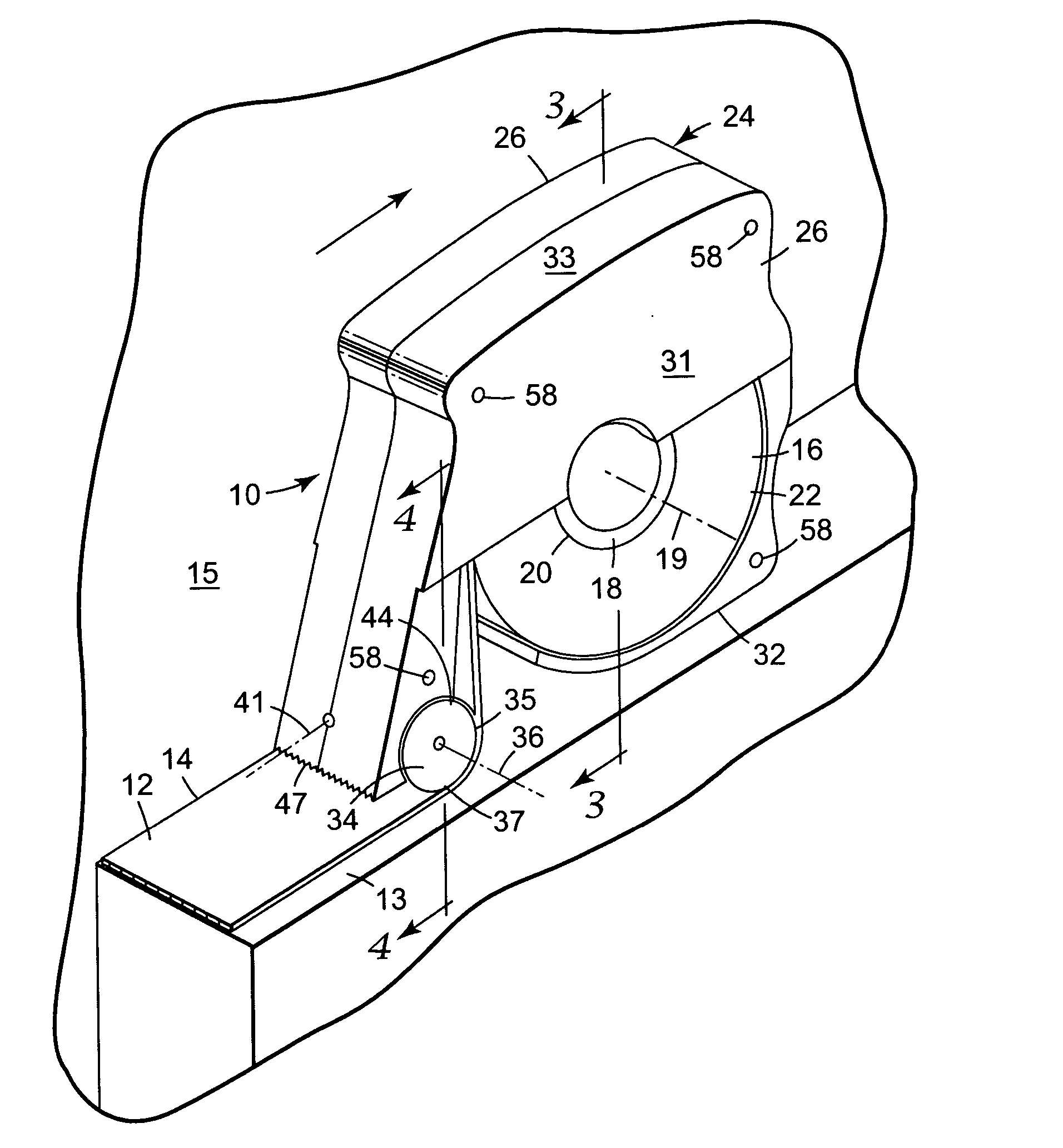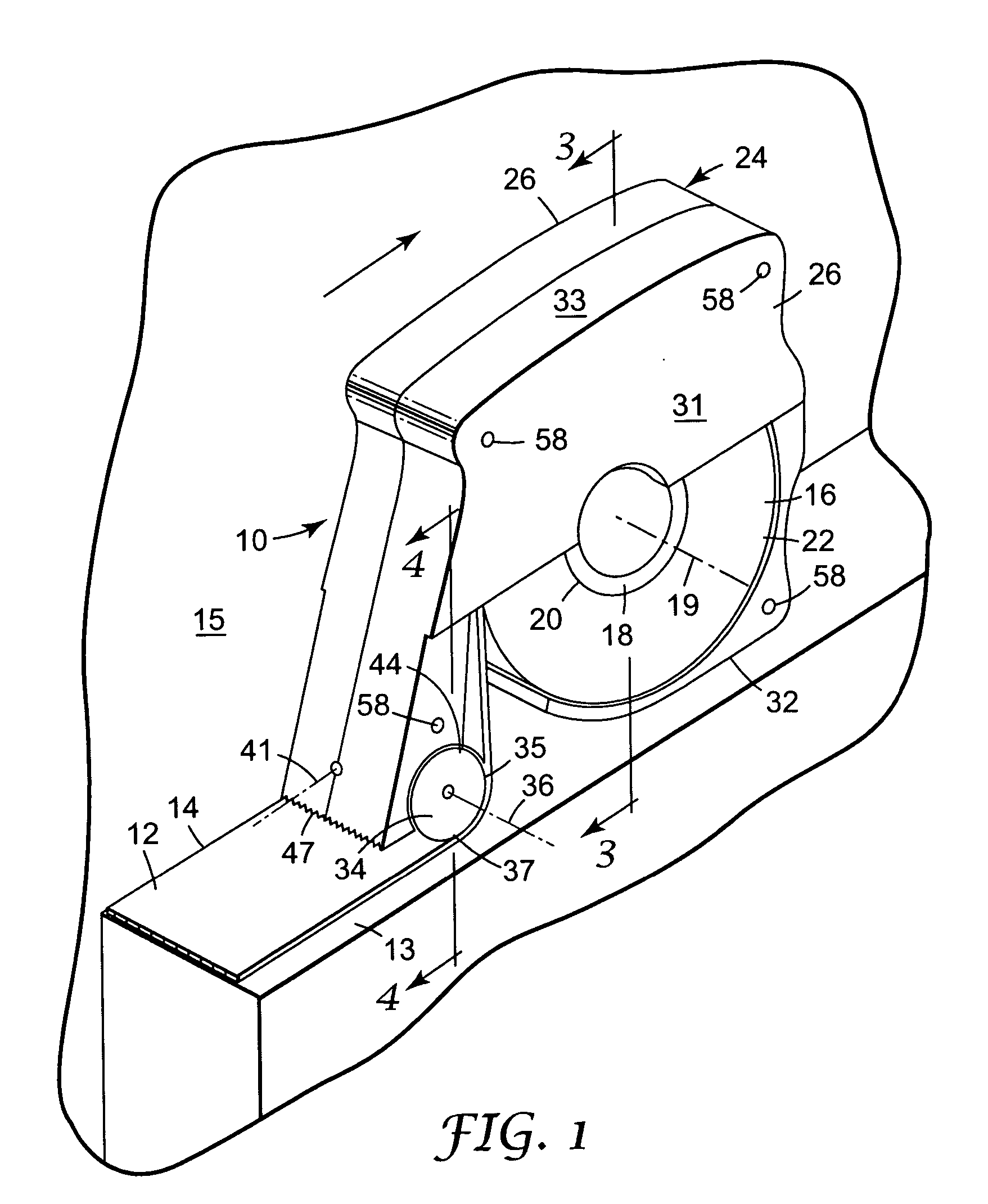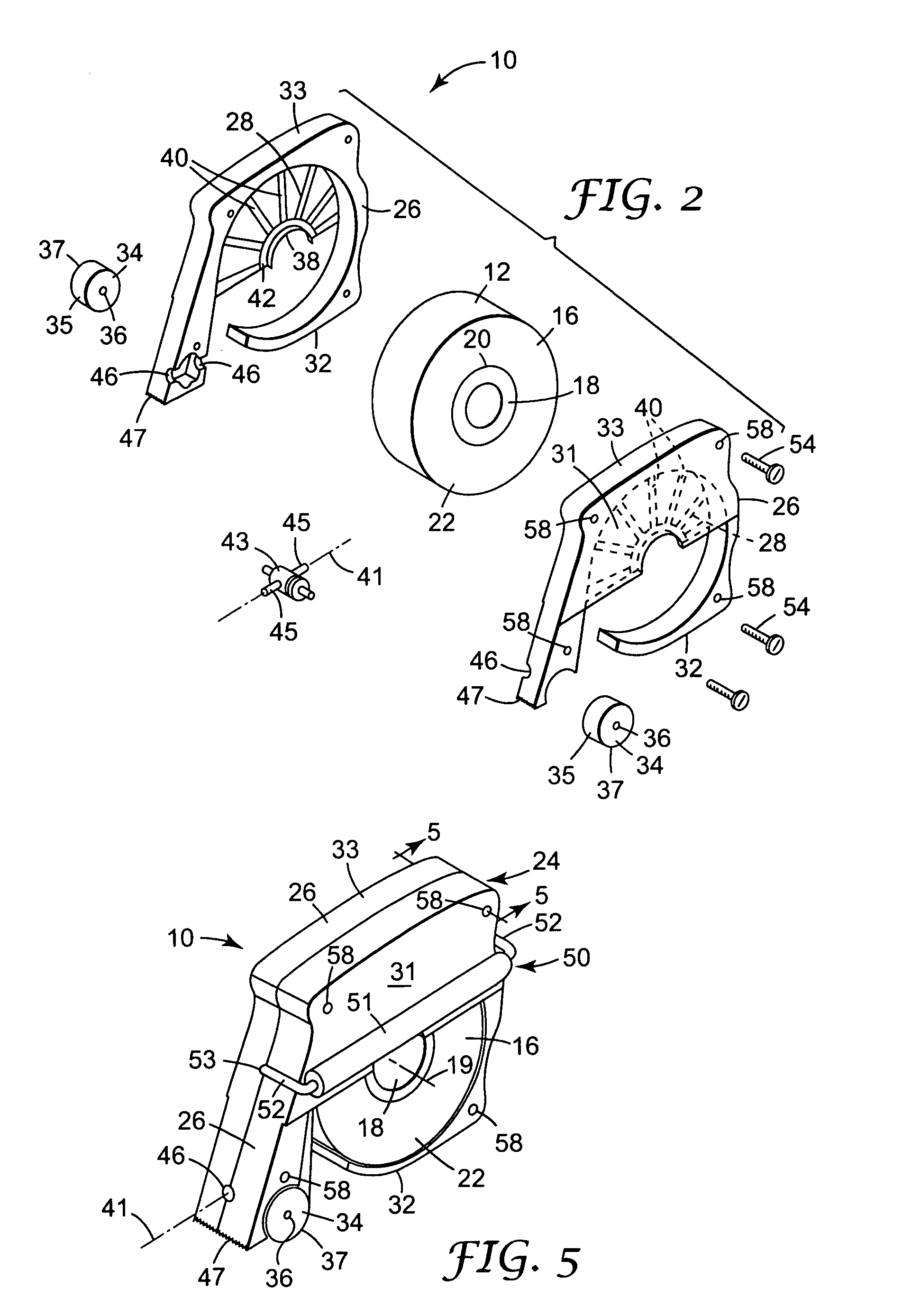Masking tape applicator
a tape applicator and tape technology, applied in the field of masking tape applicators, can solve the problems of not applying the tape at the exact location or accuracy, all known prior art devices are too expensive for most homeowners to use, and achieve the effect of great accuracy and better accommodating the wide variance in widths
- Summary
- Abstract
- Description
- Claims
- Application Information
AI Technical Summary
Benefits of technology
Problems solved by technology
Method used
Image
Examples
first embodiment
[0021] Referring now to FIGS. 1 through 4 of the drawing there is illustrated a device 10 according to the present invention that can be manually used to apply a length of tape 12 along a surface 13 to be protected (e.g., the side surface 13 of a window or door molding) with an edge 14 of the tape 12 extending along a juncture between the surface 13 to be protected and a surface 15 to be treated (e.g., a wall 15 to be painted) disposed at about a right angle with respect to the surface 13 to be protected.
[0022] The device 10 includes or is adapted to receive a roll 16 of tape (e.g., masking tape of the type commercially available from 3M Company, St. Paul, Minn., that may nominally be {fraction (1 / 2, 3 / 4)}, 1, or 2 inches or 1.3, 1.9, 2.5, or 5 centimeters wide) including a core 18 having an axis 19, a cylindrical periphery 20 around the axis 19, and including a length of the tape 12 (e.g., masking tape) that comprises a backing having opposite major surfaces extending between oppos...
second embodiment
[0036]FIGS. 6, 7, and 8 illustrate a second embodiment for a device 60 according to the present invention that includes an alternative structure for mounting two pressure rollers 61 on a housing 24′ for rotation about a common axis 62 and for pivotal movement about a pivot axis 64, which alternate structure could be substituted for the structure for mounting he pressure rollers 34 on the housing 24 for rotation about their common axis 36 and for limited pivotal movement about the pivot axis 41 described above. Except for that alternate structure described below, the device 60 and a roll of tape 16a in the device 60 have essentially the same structures as the device 10 and the roll of tape 16 described above and have applied to them the same reference numerals to which has been added the suffix “a”. In the alternative structure illustrated in FIGS. 6, 7, and 8, the rollers 61 are integrally fixed on the opposite end portions of an axle 66 that extends between the rollers 61. The axle...
third embodiment
[0037]FIG. 9 illustrates a device 80 according to the present invention that includes an alternative means for journaling the roll of tape 16b which, like the means for journaling the rolls of tape 16 and 16a in the devices 10 and 60, affords free rotation of the roll of tape 16b, but unlike those means, does not allow free axial movement of the roll of tape 16b between the portions 26b of the housing 24b. Except for that alternate structure described below, the device 80 and a roll of tape 16b in the device 80 could have essentially the same structures as either the device 10 and the roll of tape 16 or the device 60 and the roll of tape 16a described above and have applied to them the same reference numerals to which has been added the suffix “b”. In the device 80, the means for journaling the roll of tape 16b comprises a cylindrical roller 82 having an axis 84, and coaxial trunnions 86 projecting from its opposite ends mounted for rotation in the housing portions 26b. The roller 8...
PUM
| Property | Measurement | Unit |
|---|---|---|
| angle | aaaaa | aaaaa |
| angle | aaaaa | aaaaa |
| angle | aaaaa | aaaaa |
Abstract
Description
Claims
Application Information
 Login to View More
Login to View More - R&D
- Intellectual Property
- Life Sciences
- Materials
- Tech Scout
- Unparalleled Data Quality
- Higher Quality Content
- 60% Fewer Hallucinations
Browse by: Latest US Patents, China's latest patents, Technical Efficacy Thesaurus, Application Domain, Technology Topic, Popular Technical Reports.
© 2025 PatSnap. All rights reserved.Legal|Privacy policy|Modern Slavery Act Transparency Statement|Sitemap|About US| Contact US: help@patsnap.com



